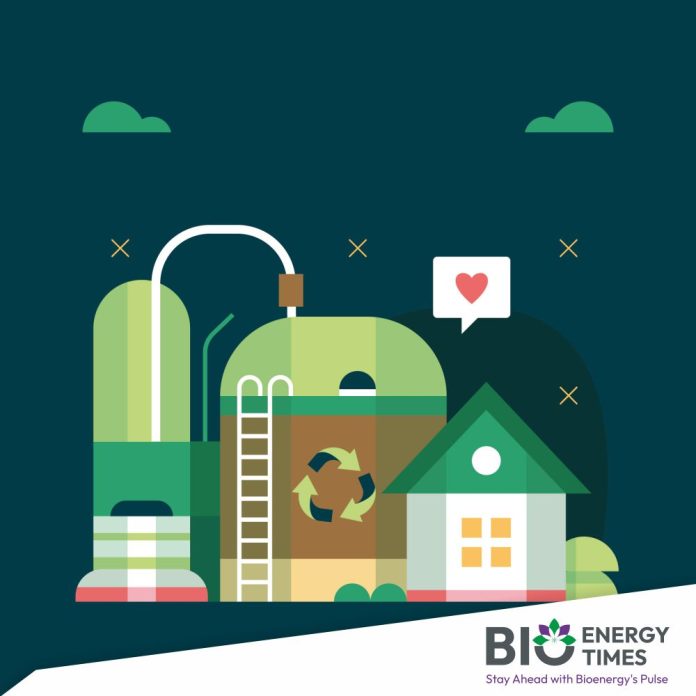India’s biogas sector could play a pivotal role in the country’s clean energy transition and efforts to meet its net-zero emissions target by 2070, according to a new white paper by the Indian Biogas Association (IBA). Despite an estimated annual Bio-CNG production potential of 62 million metric tonnes, the sector remains significantly underutilised. The report highlights persistent challenges such as fragmented implementation, lack of awareness, insufficient infrastructure, and weak policy execution, reports Business World.
The IBA’s white paper arrives at a crucial moment, as India looks to reduce its dependence on fossil fuels while improving livelihoods in rural areas. Biogas, produced through the anaerobic digestion of organic waste, offers a clean and renewable alternative to traditional fuels. It also addresses key issues such as waste management and provides new income opportunities, especially in rural communities.
Gaurav Kedia, Chairman of the Indian Biogas Association, said India’s vast reserves of waste material could be effectively turned into energy, helping to reduce methane emissions and fossil fuel usage. He noted that scaling up decentralised biogas plants and offering performance-linked financial support would help expand access to clean energy while tackling the problem of urban waste.
The country generates around 62 million tonnes of municipal solid waste every year, much of which remains untapped for energy use. In rural India, over 80 percent of households still rely on biomass fuels like firewood for cooking. This not only contributes to indoor air pollution but also causes serious health issues, particularly among women. Biogas provides a viable alternative by offering cleaner cooking solutions and producing organic fertiliser that supports sustainable agriculture.
Rohit Dev, an advisor to the IBA and managing director of Reveille Energy, explained that biogas could reduce greenhouse gas emissions by up to 80 percent compared to conventional fuels. He added that the technology also supports rural prosperity and energy self-reliance by encouraging decentralised energy systems.
While the government has launched schemes such as Satat, GobarDhan, and the Compressed Biogas (CBG) blending obligation, the IBA notes that significant gaps remain. Current policy mandates blending 1 percent CBG into natural gas by 2025, with a goal of reaching 5 percent by 2028. The white paper recommends extending these obligations to cover industrial heating and electricity generation by 2030. It also proposes the creation of a Green Certificate system to allow businesses to offset their carbon footprints by purchasing credits from renewable energy producers.
IBA President A.R. Shukla stated that achieving India’s 2070 climate goal will require blending biogas with fossil fuel grids. He noted that even reaching a 5 percent blending target by 2028 could reduce emissions from transport by up to 80 percent.
The report also stresses the transformative impact biogas could have on women’s lives, particularly in rural areas. With most rural households still dependent on traditional fuels for cooking, a switch to biogas could reduce exposure to harmful smoke, free up time for education and economic activities, and improve overall quality of life. Programs like Satat are already training women in biogas technology, helping them gain technical skills and leadership experience. The IBA believes that promoting women-led biogas microenterprises will not only boost household incomes but also improve community welfare and gender equality.
According to the white paper, the key to unlocking India’s biogas potential lies in creating a unified national mission that consolidates existing programs, ensures centralised tracking and performance evaluation, and streamlines funding. It advocates for expanding decentralised biogas infrastructure in rural areas, housing complexes, and commercial zones through financial incentives, accessible financing, and turnkey project models. The report also underscores the need to improve organic waste segregation and establish reliable feedstock supply chains, recommending performance-based grants to local bodies.
Another major recommendation is to address the skills gap by training more than 75,000 personnel by 2030 through collaborations between the government, academia, and the private sector. It suggests that biogas should be integrated into smart urban planning and building policies, with a focus on installing on-site biogas systems that can work alongside other renewable technologies like solar energy.
The report concludes that biogas has the potential to reshape India’s energy future by reducing emissions, boosting agricultural productivity, and enhancing rural livelihoods. However, realising this potential will require a coordinated national effort involving government bodies, industry stakeholders, and civil society. A.R. Shukla emphasised that scaling the success of initiatives like the Satat scheme will require stronger enforcement, monetary incentives, and effective monitoring. He added that decentralised production, public-private partnerships, and urban-rural coordination will be vital to improving energy security and meeting India’s climate commitments.
The IBA believes that biogas is not just a clean energy solution—it is a transformative force capable of turning waste into wealth and driving India toward a more sustainable and equitable future.
















